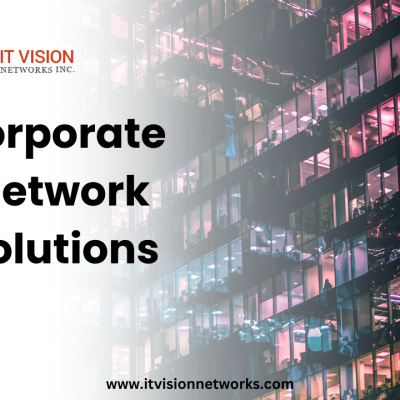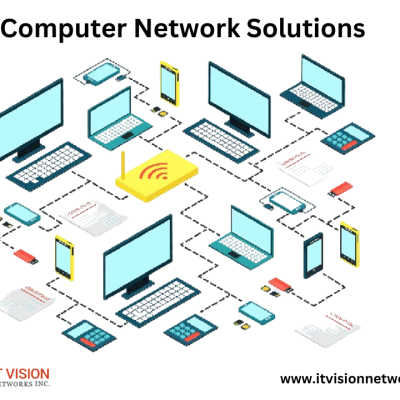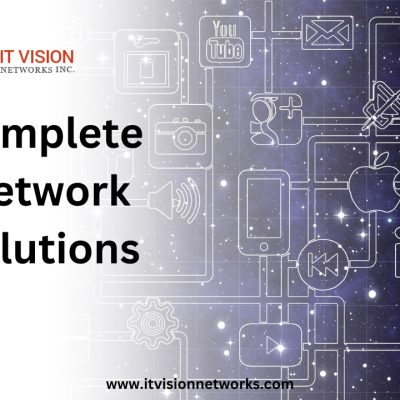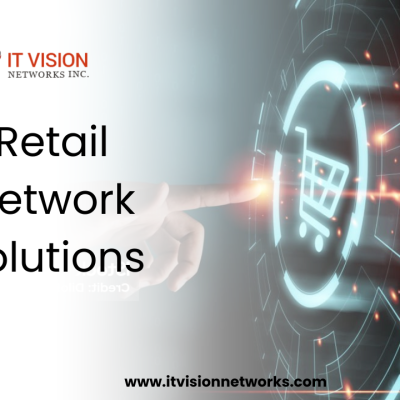This tutorial will go over the things to think about when choosing an IT bridge, the kinds of bridges that work best with your setup, and the advantages of updating to a new one. We will also go over typical blunders to steer clear of when selecting an IT bridge, how to evaluate a bridge’s quality and the function of IT bridges in network architecture. We will also explore the future of IT bridges in contemporary network settings, important factors to consider for IT bridge upkeep and support, and advice on extending the life of your IT bridge. You will have a thorough grasp of how to choose and manage an IT bridge that is dependable and fits the requirements of your IT infrastructure by the time you finish reading this tutorial.
Factors to Consider When Choosing an IT Bridge
Reliability is one of the most crucial factors when selecting the right IT bridge for your infrastructure. You need a bridge that you can depend on to maintain seamless connectivity and data transfer between different components of your IT system. Look for a vendor with a proven track record of providing reliable bridges that can withstand heavy usage and potential technical challenges.
Another essential factor is compatibility. The IT bridge you choose should be compatible with your existing infrastructure’s various hardware and software components. It should seamlessly integrate with your systems without requiring extensive modifications or causing disruptions. Make sure to thoroughly assess the compatibility of any potential bridge before making a final decision.
Scalability is also crucial when evaluating different IT bridge options. As your business grows and evolves, so too will your infrastructure needs. Your chosen bridge should be able to scale alongside your organization, accommodating increased data traffic and additional devices without compromising performance or stability. Prioritize bridges that offer flexible scalability options to future-proof your IT environment.
Types of IT Bridges Suitable for Your Infrastructure
When choosing the best IT bridge for your infrastructure, you have several alternatives. Wireless bridges are perfect for growing networks in difficult-to-reach locations because they provide the flexibility of linking devices without the requirement for physical wires. Conversely, Ethernet bridges offer a dependable and fast link between various network components. Last but not least, powerline bridges provide a practical option for places where installing new cables is impractical by using the existing electrical wire to transfer data signals.
Wireless bridges are perfect for outdoor setups or remote offices that require connectivity but lack the infrastructure for traditional wired connections. Wireless bridges can be an excellent choice if you’re looking to connect multiple buildings within proximity or expand your network coverage outdoors. Conversely, Ethernet bridges may be best if you need a stable and fast connection between two separate network segments within a building or campus environment.
Powerline bridges can utilize existing electrical wiring to establish network connections when installing new cabling is challenging or expensive. This option can be particularly useful in older buildings or rental properties where running new cables may not be feasible. By understanding the specific needs of your infrastructure and considering these different types of IT bridges, you can make an informed decision when selecting the most suitable bridge for your IT setup.
Benefits of Upgrading to a New IT Bridge
Upgrading to a new IT bridge can bring about a world of exciting possibilities for your IT infrastructure. With improved performance, you can expect faster data transfer speeds and seamless connectivity, allowing your team to work more efficiently than ever.
Enhanced security is another significant benefit of upgrading to a new IT bridge. By investing in the latest technologies, you can better protect your sensitive data from cyber threats and ensure that your network remains secure. Future-proofing is also a key advantage of upgrading to a new IT bridge. By choosing cutting-edge solutions, you can be confident that your infrastructure will be able to adapt and scale as technology continues to evolve, saving you time and resources in the long run.
Common Mistakes to Avoid When Selecting an IT Bridge
Ignoring compatibility is a surefire way to set yourself up for headaches. Ensuring that your IT bridge is compatible with your existing infrastructure, software, and hardware is crucial. Overlooking this key factor can lead to integration issues and inefficiencies that could have been easily avoided.
Another common mistake is focusing solely on price when selecting an IT bridge. While budget considerations are important, it’s essential also to prioritize functionality and performance. Opting for a cheaper option without considering its scalability or long-term benefits can result in costly upgrades or replacements in the future. Scalability should be noticed, too. Choosing an IT bridge that can grow alongside your business needs is vital. Ignoring scalability means risking having to invest in a new system sooner than anticipated as your company expands and evolves.
How to Assess the Quality of an IT Bridge
When selecting a reliable IT bridge for your infrastructure, one of the critical factors to consider is brand reputation. Look for well-established brands that deliver high-quality products and excellent customer service. A reputable brand will likely invest in research and development, ensuring their IT bridges are built to last and perform optimally.
In addition to brand reputation, take the time to read customer reviews. These can provide valuable insights into real-world experiences with different IT bridges. Pay attention to feedback on reliability, ease of installation, and overall performance. You can better understand what each product offers by considering positive and negative reviews.
Pay attention to the importance of technical specifications. Look for an IT bridge that meets your requirements regarding compatibility, speed, and security features. Whether you need support for multiple protocols or advanced encryption capabilities, carefully reviewing technical specifications will ensure you select an IT bridge that aligns with your infrastructure needs.
Understanding the Role of IT Bridges in Network Infrastructure
Data transmission is vital to IT bridges, allowing seamless and efficient communication between network devices. With the ability to transmit data at high speeds and with minimal latency, IT bridges ensure that information can be sent and received reliably within the network infrastructure.
Network segmentation is another crucial role IT bridges play, as they help divide an extensive network into smaller, more manageable segments. This enhances security by isolating potential threats and improves overall network performance by reducing congestion and improving traffic flow.
In addition to data transmission and network segmentation, IT bridges are essential for traffic management within the network infrastructure. By intelligently directing data packets to their intended destinations, bridges optimize the use of available bandwidth and prevent unnecessary bottlenecks, ultimately ensuring smooth and uninterrupted operation of the entire system.
The Future of IT Bridges in Modern Network Environments
Integrating IT bridges with IoT technology revolutionizes connecting and managing our network environments. Organizations can achieve higher efficiency and productivity with seamless communication between devices and systems. The potential for real-time data exchange and analysis opens up new possibilities for innovation and growth.
5g connectivity is set to take IT bridges to the next level, offering unprecedented speed and reliability. As more devices connect to the network, the demand for faster data transmission will continue to rise. IT bridges that are equipped to handle 5G connectivity will be essential for keeping up with the pace of modern business operations.
Enhanced security measures are crucial in modern network environments, especially as cyber threats continue to evolve. IT bridges play a vital role in ensuring that data is always protected. By implementing advanced security features such as encryption and access control, organizations can safeguard their infrastructure against potential breaches.
Critical Considerations for IT Bridge Maintenance and Support
When selecting an IT bridge for your infrastructure, it’s crucial to consider the vendor support services. You want to ensure that the vendor provides reliable and timely support in case of any issues or maintenance needs. Look for a vendor with a strong reputation for excellent customer service and prompt response times.
Firmware updates are another critical consideration for IT bridge maintenance and support. Regular firmware updates are essential to ensure your IT infrastructure’s security, stability, and performance. Choosing a bridge that receives regular firmware updates from the vendor, is critical as outdated firmware can leave your system vulnerable to security threats.
Having access to troubleshooting resources is also vital when maintaining an IT bridge. Whether it’s online documentation, technical support hotlines, or user forums, having readily available troubleshooting resources can help you quickly resolve any issues that may arise with your IT bridge. Ensure the vendor offers comprehensive troubleshooting resources for their maintenance and support package.
Conclusion
Proper ventilation is crucial for maintaining the longevity of your IT bridge. Ensure it is installed in a well-ventilated area to prevent overheating, which can lead to performance issues and potentially shorten its lifespan. Regular inspections are vital in identifying any potential issues early on. By conducting routine checks, you can catch any signs of wear and tear or damage before they escalate into more significant problems, thus extending the life of your IT bridge.
Our website is aimed at American companies and private consumers that are wanting to buy network switches, routers, bridges, PDUs, and wireless access points. We provide a large selection of premium networking devices to match your unique needs, whether you’re building up a new network or updating your current setup. Regarding the newest trends, best practices, and product evaluations, our blog offers insightful information that will assist you in making well-informed judgments regarding the acquisition of IT equipment. Explore our extensive selection of networking equipment on our website and keep up with the most recent happenings in the field.
FAQs
Selecting a reliable bridge for your IT infrastructure is crucial as it ensures smooth communication and data transfer between different network segments. It helps maintain network stability, minimize downtime, and improve overall performance.
When selecting a reliable bridge for your IT infrastructure, you should consider factors such as compatibility with existing network equipment, scalability to accommodate future growth, support for necessary protocols and standards, ease of configuration and management, and vendor reputation for quality and reliability.
Various types of bridges are available for IT infrastructure, including Ethernet, wireless, virtual, and software-defined bridges. Each type has its advantages and use cases, so choosing the one that best suits your specific requirements is essential.
To ensure the reliability of a bridge for your IT infrastructure, you can consider factors such as redundancy and failover mechanisms, built-in diagnostics and monitoring capabilities, support for advanced features like VLANs and quality of service, and compatibility with industry standards. Additionally, reading reviews and seeking recommendations from trusted sources can help make an informed decision.
Yes, a reliable bridge for IT infrastructure should meet specific certifications and standards to ensure compatibility and interoperability. Some common certifications and standards to look for include IEEE 802.1Q (VLANs), IEEE 802.1p (QoS), IEEE 802.3 (Ethernet), and Wi-Fi Alliance certifications for wireless bridges.






